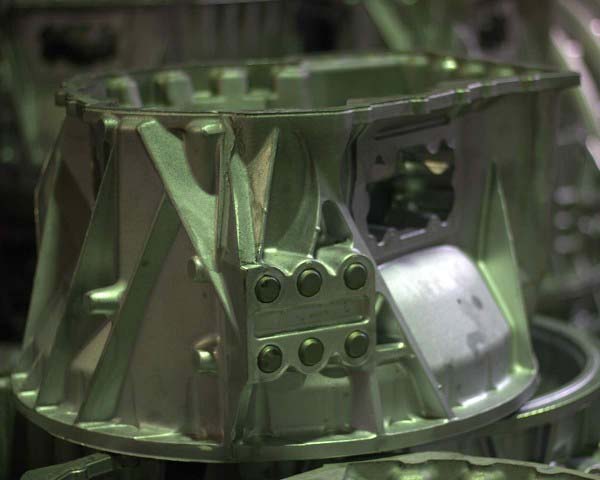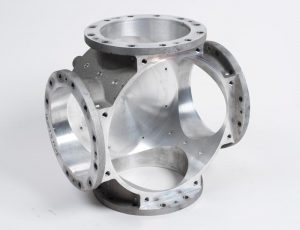Aluminum Casting Explained: Key Facts and Insights for Industry Professionals
Aluminum casting works as a crucial procedure in modern-day manufacturing, forming components across numerous markets. Its varied techniques, such as sand and die casting, satisfy different production requirements. The special buildings of aluminum alloys enhance their applicability, yet tests continue to be in preserving high quality and efficiency. Understanding these aspects is necessary for sector specialists. What are the newest improvements and ideal techniques that can further enhance this process?
Summary of Aluminum Casting Processes

Key elements of aluminum casting procedures consist of the preparation of molds, which may be made from sand, steel, or ceramic products, depending upon the meant usage. Additionally, temperature level control is crucial to guarantee appropriate melting and solidification of aluminum.
The casting procedure enables for detailed layouts and can achieve high degrees of dimensional precision. When cooled down, the spreadings might undertake completing procedures such as machining or surface area treatment to fulfill details performance criteria. On the whole, aluminum casting serves as a versatile production method, properly satisfying the diverse requirements of various markets.
Kinds of Aluminum Casting Techniques
In the domain name of aluminum casting, various methods are employed to achieve different results. Sand casting strategies offer adaptability and cost-effectiveness for complex shapes, while die casting processes offer high precision and effectiveness for mass manufacturing. Comprehending these methods is crucial for selecting the suitable technique based on task requirements.
Sand Casting Methods
Sand casting techniques stand for an essential method in aluminum casting, where sand is made use of as a mold material to form molten metal. This procedure entails developing a pattern from the wanted part, which is after that positioned in a sand mixture to create a mold. The sand is compacted around the pattern, and after elimination, it creates a dental caries in the form of the component. Molten aluminum is poured into this dental caries, enabling it to strengthen and cool. One considerable benefit of sand casting is its flexibility; it can accommodate intricate forms and huge elements. Additionally, the materials made use of are relatively inexpensive, making it an obtainable alternative for different manufacturing applications in the aluminum industry.
Die Casting Processes
Die casting procedures are a noticeable approach for shaping aluminum elements, making use of high-pressure methods to require liquified metal into precisely crafted molds. This process is specifically preferred for its ability to create intricate forms with tight resistances and a smooth surface. There are 2 main kinds of die casting: warm chamber and chilly chamber. Hot chamber die casting appropriates for metals with low melting points, permitting for faster production prices. On the other hand, cold chamber die casting is suitable for greater melting factor steels, calling for a separate melting furnace. Both techniques boost efficiency and minimize product waste, making them necessary in vehicle, aerospace, and customer goods markets. Comprehending these procedures aids experts pick the most suitable method for their particular applications.
Material Properties of Aluminum Alloys

Strength and Durability
Toughness and longevity are important qualities of aluminum alloys that make them appropriate for various casting applications. These products show a beneficial strength-to-weight proportion, enabling the creation of light-weight yet robust components. When it come to tensile toughness, certain aluminum alloys can be crafted to stand up to significant loads without flawing. This building is specifically crucial in industries such as aerospace and vehicle, where efficiency and security are extremely important. Additionally, aluminum alloys usually preserve their mechanical homes under varied temperature level conditions, guaranteeing consistent performance. The intrinsic ductility of these alloys also enables efficient shaping during the casting procedure, making it much easier to create complex geometries. In general, imp source the toughness and sturdiness of aluminum alloys contribute significantly to their extensive use in advanced applications.
Deterioration Resistance Characteristics
While aluminum alloys are prized for their toughness and light-weight homes, their corrosion resistance is another essential characteristic that boosts their viability for different applications. Aluminum normally creates a safety oxide layer when subjected to dampness, which assists to avoid additional oxidation. This inherent home makes aluminum alloys particularly valuable in settings vulnerable to corrosion, such as aquatic and industrial settings. Additionally, various alloy structures can influence resistance degrees, with certain alloys especially engineered to enhance this characteristic. Treatments like plating can better boost rust resistance by enlarging the oxide layer. Understanding the rust resistance of aluminum alloys is crucial for market professionals when choosing products for tasks calling for toughness and long life in tough environments.
Advantages of Aluminum Casting in Production
Aluminum casting offers various benefits in production, making it a preferred choice for numerous markets. One significant benefit is its lightweight nature, which contributes to lowered transport prices and boosted energy effectiveness in output. Aluminum's excellent thermal and electrical conductivity boosts functionality in applications requiring heat dissipation or electric conduction.
The product's capacity to be cast into intricate forms enables design flexibility, lowering the need for extra machining procedures. In addition, aluminum casting shows exceptional rust resistance, causing longer product life-spans and lower maintenance expenses.

Typical Applications of Aluminum Castings
The versatility of aluminum casting enables its prevalent use across numerous industries. Usual applications consist of auto parts, where lightweight and corrosion-resistant components, such as engine blocks and transmission housings, enhance lorry performance. In the aerospace sector, aluminum spreadings are used for architectural parts, using stamina without adding considerable weight.
Additionally, the electric market take advantage of aluminum spreadings in producing rooms and warm sinks, where thermal conductivity is vital. The customer products sector also incorporates aluminum castings in items like pots and pans, furnishings, and attractive things, combining aesthetics with capability.
Additionally, the construction sector uses aluminum castings for architectural components, home window frameworks, and fixtures, which supply sturdiness and layout versatility. Overall, the varied applications of aluminum spreadings underscore their relevance in modern-day manufacturing, adding to advancements in effectiveness and item style throughout several areas.
Developments and Technical Innovations
As markets remain to advance, advancements in aluminum casting modern technology are transforming production processes and item capacities. Improvements in 3D printing and additive manufacturing have allowed the development of complicated geometries that were formerly difficult to attain with typical approaches. These technologies enable for quick prototyping, reducing lead times and expenses.
Furthermore, renovations in mold design and materials have actually enhanced the casting procedure by enhancing effectiveness and minimizing waste. The assimilation of smart manufacturing methods, such as IoT gadgets and real-time data analytics, permits better monitoring and optimization of production parameters, causing greater high quality outcomes.
Developments in aluminum alloys offer enhanced stamina, corrosion resistance, and lightweight residential properties, providing to the expanding demands in aerospace and vehicle markets. Collectively, these innovations are not just enhancing performance but also fulfilling the rigorous criteria of modern-day design applications.
Finest Practices for Quality Assurance in Aluminum Casting
Guaranteeing premium outcomes in aluminum casting requires adherence to ideal methods that encompass numerous stages of the production process. Initially, complete material examination is vital to validate the high quality of aluminum alloys used, as pollutants can substantially influence the end product. Applying accurate melting and pouring methods reduces defects; maintaining suitable temperatures stops oxidation and promotes uniformity.
Mold and mildew layout plays a vital function; using computer-aided layout (CAD) can enhance accuracy and reduce human error. Routine surveillance of the cooling procedure is important to prevent warping and contraction. In addition, making use of non-destructive testing approaches, such as ultrasonic or X-ray assessments, helps determine inner problems without harming the elements.
Lastly, establishing a responses loop with designers and operators cultivates continuous renovation, making sure that quality control actions develop alongside technical improvements. By adhering to these best methods, manufacturers can improve the dependability and performance of aluminum castings.
Regularly Asked Inquiries
What Are the Environmental Impacts of Aluminum Casting?
The environmental effects of aluminum casting consist of significant power consumption, greenhouse gas emissions, and prospective water pollution from factory procedures. Additionally, bauxite mining for aluminum ore can lead to environment damage you can try here and dirt deterioration.
How Does Aluminum Casting Compare to Various Other Metal Casting Processes?
Aluminum casting commonly uses benefits in lightweight components and deterioration resistance compared to other processes, such as iron or steel casting, which might supply better strength yet result in much heavier and much less corrosion-resistant this post products. - aluminum casting
What Prevail Problems in Aluminum Castings and Their Reasons?
Typical issues in aluminum castings consist of porosity, shrinkage, and inclusions. Reasons frequently originate from inappropriate pouring strategies, insufficient mold and mildew design, or contamination of the molten metal, affecting the final item's integrity and performance.
What Safety and security Precautions Should Be Taken Throughout Aluminum Casting?
Throughout aluminum casting, essential security preventative measures include putting on protective equipment, ensuring proper ventilation, keeping a tidy office, managing molten metal with care, and following well established methods to lessen risks of burns, inhalation dangers, and accidents.
Exactly How Can I Enhance the Efficiency of My Aluminum Casting Operations?
To improve efficiency in aluminum casting operations, one ought to optimize mold and mildew design, improve product handling, use automated processes, perform routine maintenance on equipment, and invest in employee training to boost skills and efficiency.
Different approaches exist, aluminum casting includes several main procedures that provide to different applications and needs. Key components of aluminum casting procedures include the preparation of mold and mildews, which may be made from sand, metal, or ceramic products, depending on the meant usage. Sand casting methods represent an essential approach in aluminum casting, where sand is utilized as a mold product to shape molten metal. As sectors continue to progress, developments in aluminum casting technology are changing manufacturing procedures and product abilities. Making sure premium outputs in aluminum casting calls for adherence to finest methods that encompass numerous phases of the production procedure.